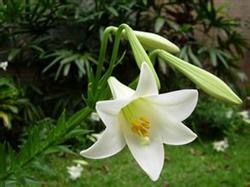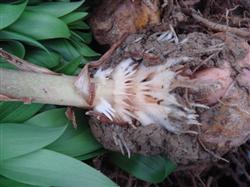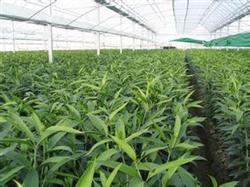How to manage Lily during its growing period

Before emergence, the management should do a good job of ditch drainage to ensure that the lily land is neither dry nor waterlogged, and there is no low temperature freezing damage. Seedling management from late April to early May, when the seedling height is about 10 cm, 2550 kg of rotten vegetable cake fertilizer is applied per mu, or 30 piculs of rotten pig manure and urine (cannot be applied with chemical fertilizer containing fluorine and chlorine, let alone pig manure that has not been piled up). Strip application or hole application, it is easy to cause "rotten seedlings" if applied too close to 6-7 cm from the lily seedlings, and the fertilizer is easy to be lost. The management of flower bud stage combined with soil cultivation was carried out with a depth of 6cm to 7cm to promote the root system to grow more and deeper and control the growth of aboveground stems. The buds should be removed in time when the buds change color and do not bloom. At the same time, it should be noted that the picked buds should not be discarded in the field, but should be dealt with centrally to prevent leaving the source of bacteria. Fertilization at flower bud stage is mainly skillful application, generally according to the weather, soil quality, the amount of base fertilizer and seedling fertilizer, plant growth and appearance to determine the time, quantity and method of topdressing. Bulb speed long-term management at this time to prevent waterlogging in the lily field, timely clear ditch drainage, choose a sunny day, remove the disease and debris, concentrated burning or deep burial. According to the weeds and soil consolidation in the field, a shallow ploughing was carried out after the buds were removed, with a depth of 3-5 cm. At this stage, the root absorption capacity is relatively weakened, in order to supplement the deficiency of root nutrient absorption, extra-root topdressing can be carried out, which has a certain effect on preventing premature senescence and improving the yield and quality of bulbs. Can be sprayed with urea 300 times aqueous solution or potassium dihydrogen phosphate 300 times 500 times aqueous solution, or spray water with 10-15 ml Lewanjia water agent per mu, use alternately and spray again every ten days.
- Prev

Symptoms and control of Rhizoctonia sclerotiorum of lily
If the infection is mild, it only harms the leaves in the soil and the green leaves in the lower part of the buds, with sunken light brown spots on the leaves. Generally speaking, although the growth of the plant is affected, it can continue to grow. Seriously infected plants, aboveground growth is hindered, underground white leaves and ground.
- Next

A wonderful method to control lily bulb canker
(1) Choose loose fertile and well-drained loam land for soil preparation. When soil preparation, fully decomposed organic fertilizer is applied 5 square meters per mu, and deep tillage is 30~35cm. Then the bed was made according to the specification of width 110~120cm and walkway 50cm, and then 10~15kg of calcium phosphate, 4~6kg of potassium sulfate and 0.8~1.0 kg of pentachloronitrobenzene were applied to the bed surface every 100m2.
Related
- Fuxing push coffee new agricultural production and marketing class: lack of small-scale processing plants
- Jujube rice field leisure farm deep ploughing Yilan for five years to create a space for organic food and play
- Nongyu Farm-A trial of organic papaya for brave women with advanced technology
- Four points for attention in the prevention and control of diseases and insect pests of edible fungi
- How to add nutrient solution to Edible Fungi
- Is there any good way to control edible fungus mites?
- Open Inoculation Technology of Edible Fungi
- Is there any clever way to use fertilizer for edible fungus in winter?
- What agents are used to kill the pathogens of edible fungi in the mushroom shed?
- Rapid drying of Edible Fungi

